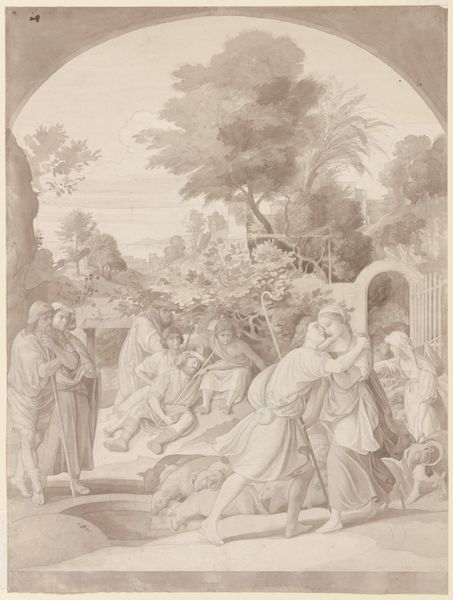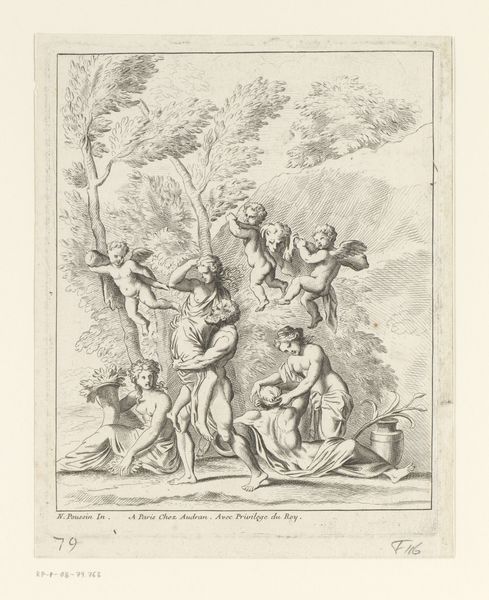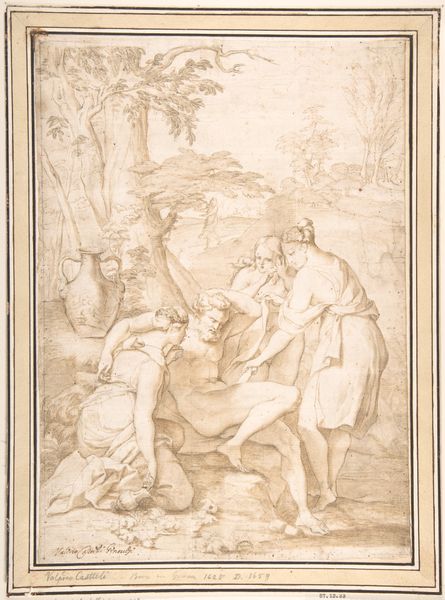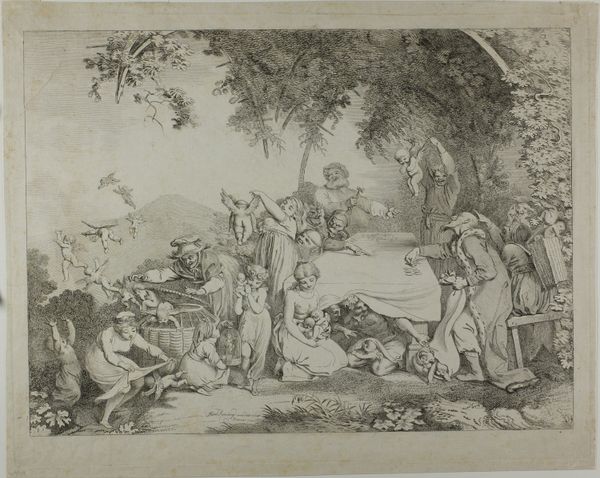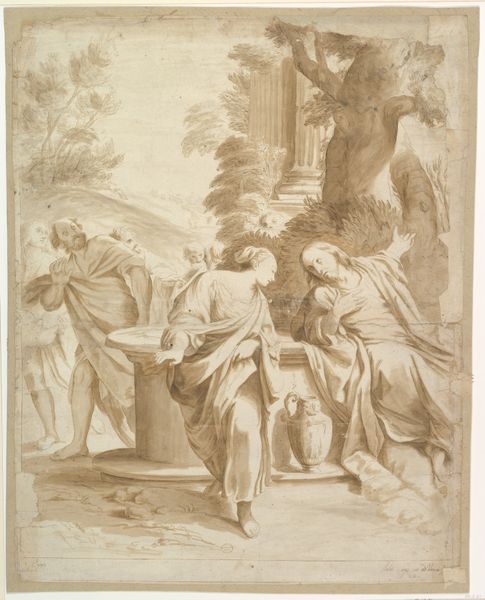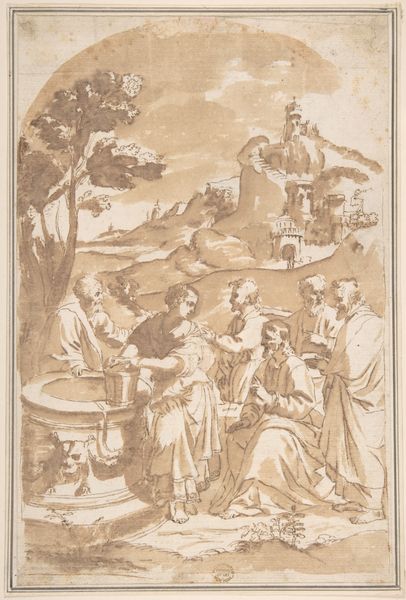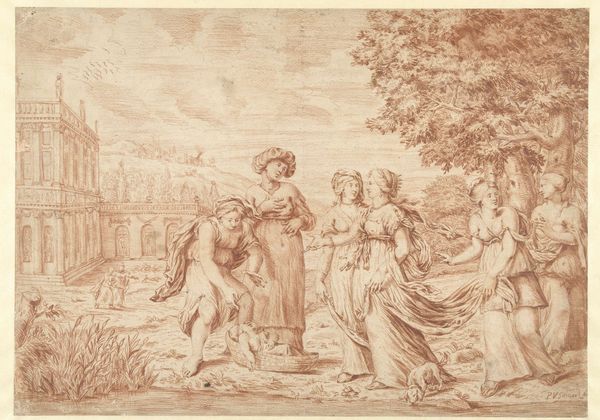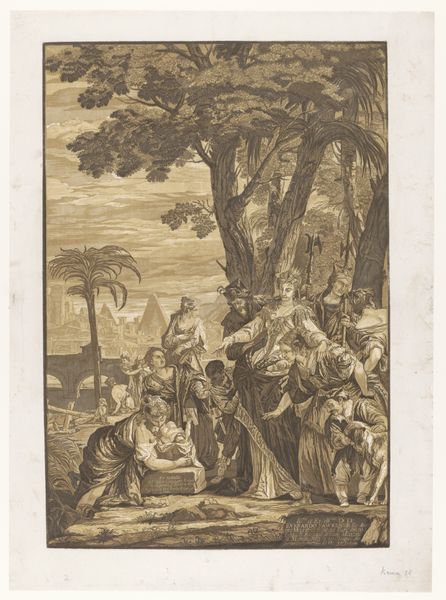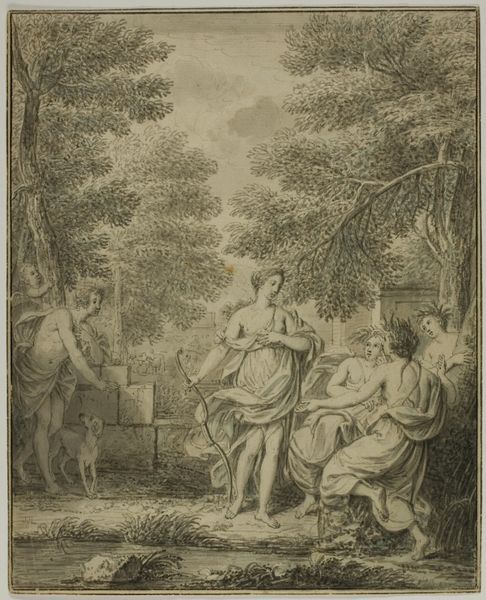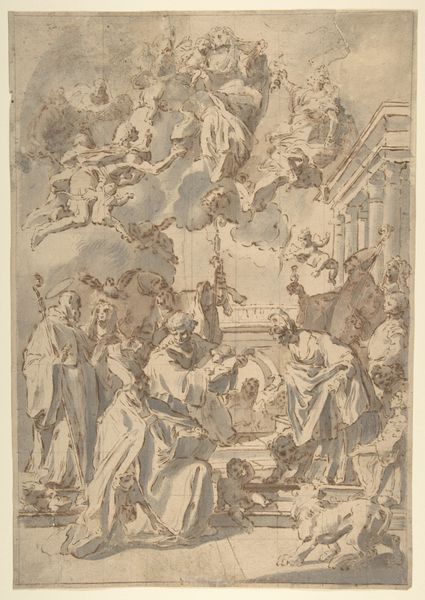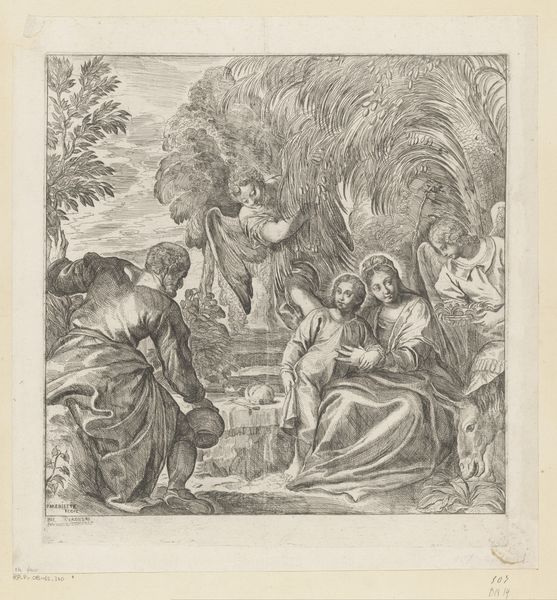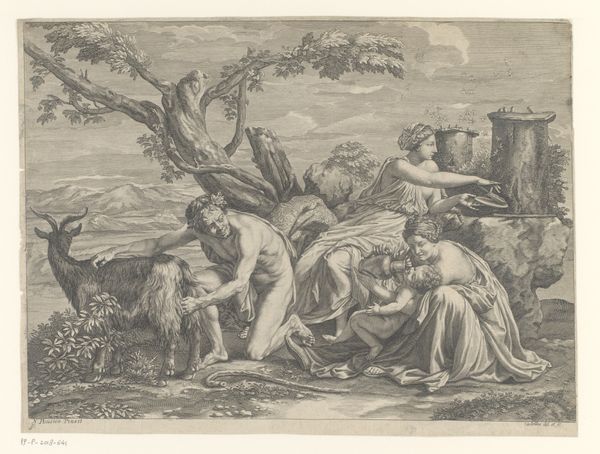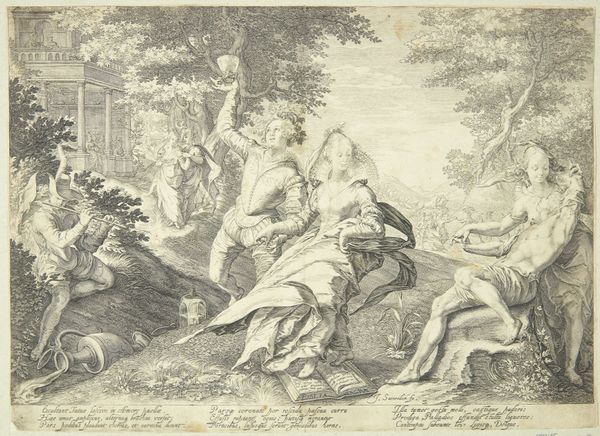
drawing, ink
#
drawing
#
narrative-art
#
landscape
#
charcoal drawing
#
figuration
#
ink
#
romanticism
#
history-painting
Copyright: Public Domain
Curator: Julius Schnorr von Carolsfeld's 1820 drawing, "Jacob and Rachel at the well," is currently housed in the Städel Museum. He employed ink and charcoal in its creation. Editor: The scene strikes me immediately with its tenderness and muted light, like a dream half-remembered. It also presents such clear romanticized themes with its arcadian composition, seemingly devoid of temporal context, drawing me into its story. Curator: This piece presents a potent narrative ripe for deconstruction. The central figures, Jacob and Rachel, lock in embrace – a patriarchal symbol. Notice how her passivity is a tool to justify the social system within a Biblical history. Editor: The embrace also reads as a culturally familiar symbol for recognition, promise and alliance—key attributes when marking critical bonds with "chosen" peoples, be that for social status or self-actualization. Curator: But what about the labour imposed upon Rachel? To be cast as the caretaker who provides for her kin reveals how roles and duties, specifically gendered, are sanctified within even idealized, picturesque scenes. It underscores how seemingly idyllic narratives serve to uphold unequal distributions of power. Editor: I agree that there’s labour happening there, both in what she has to do and in the performance she has to enact, though, notice the well. It appears as a classic symbol—representing sources of spiritual cleansing. We see Rachel’s gesture to invite others to partake and to refresh, thus portraying a hopeful narrative about redemption through togetherness. Curator: While there’s room for finding a positive symbolism in figures, their relationship comes with the implicit control which frames women as helpmates who sacrifice for men to acquire dominance in societal realms. And for me, its lack of visibility and direct involvement also speaks loudly. Editor: Well, I feel that we’ve uncovered such complexity and beauty interwoven into what I first viewed as such a sweetly simple scene. Curator: Exactly. Bringing attention to these hidden codes unveils the pervasive effect of these assumptions that structure every interaction. I see the need to remain curious with an ongoing dialogue between power structures and art.
Comments
No comments
Be the first to comment and join the conversation on the ultimate creative platform.
